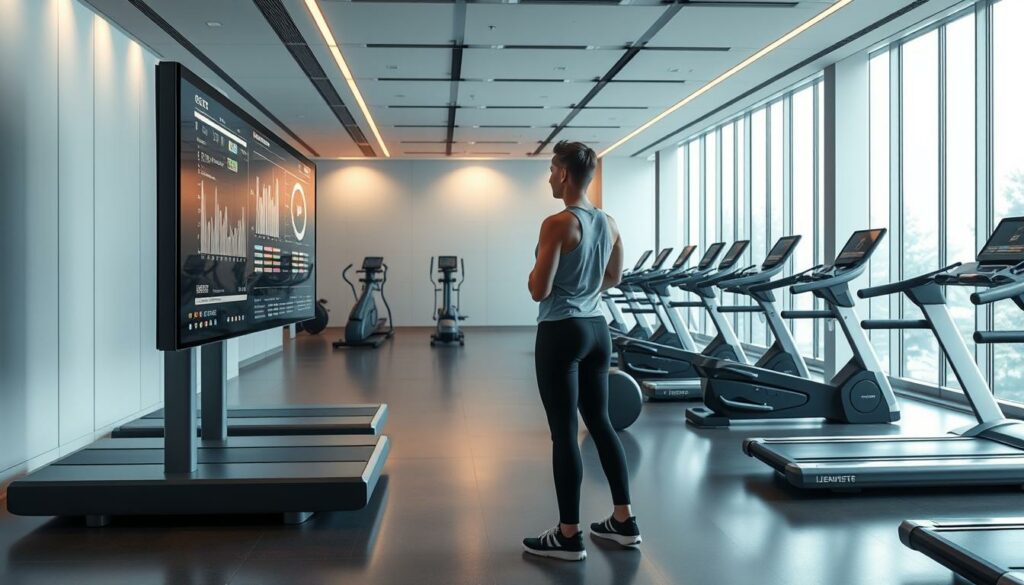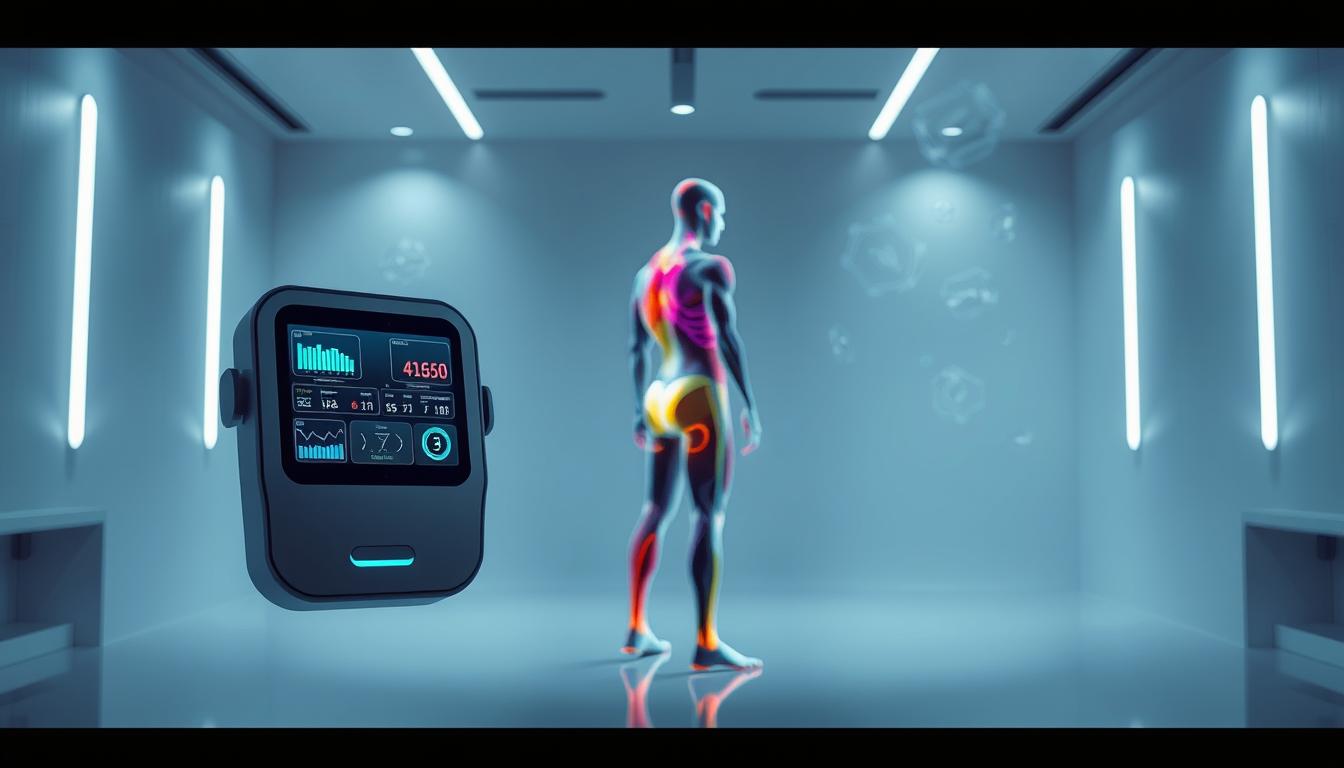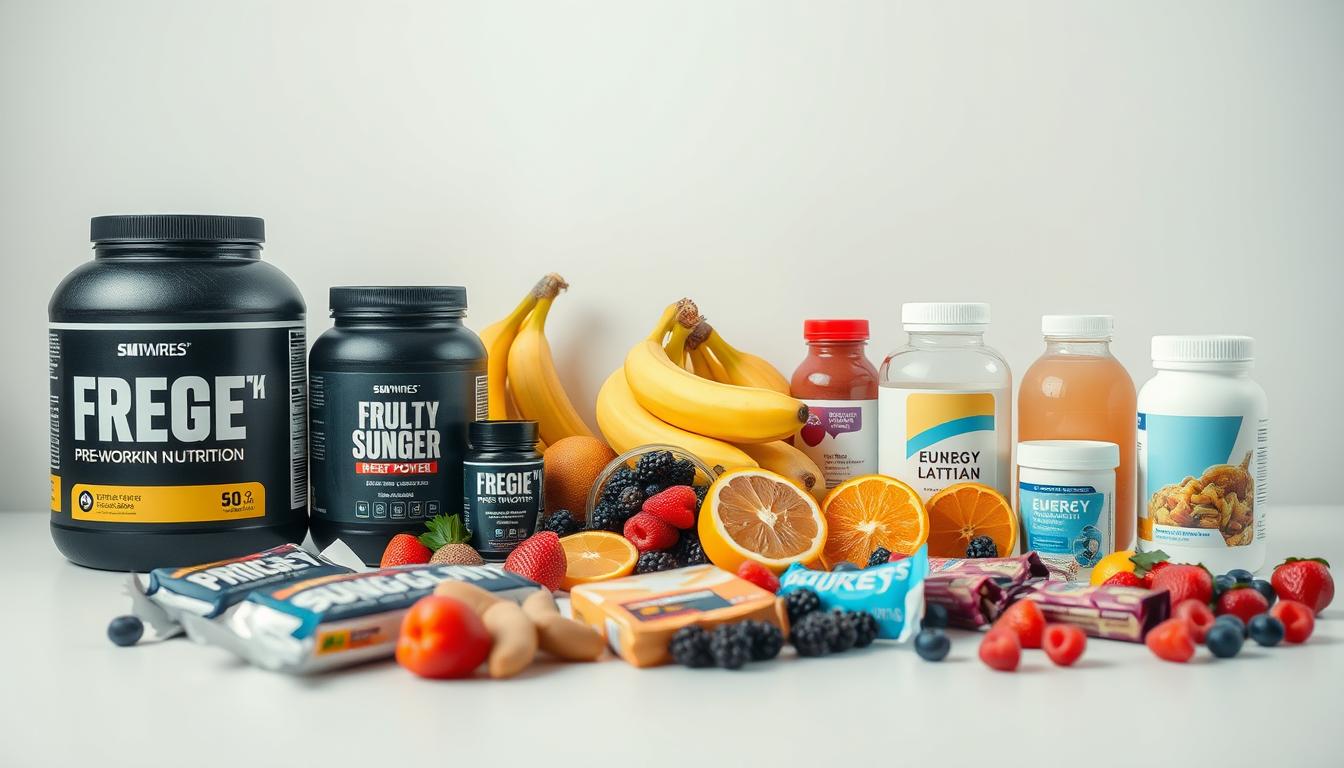Are you struggling to achieve your fat loss goals despite consistent effort? You’re not alone.
Traditional methods often fall short because they lack personalized insights into your body composition.
AI-powered tracking revolutionizes your fat loss journey by providing detailed body composition analysis. This helps you make informed decisions.
Key Takeaways
- Personalized fat loss plans with AI-driven insights
- Accurate body composition analysis
- Data-driven decision making for effective fat loss
- Enhanced tracking capabilities for progress monitoring
- Customized recommendations for a successful journey
The Evolution of Fat Loss Tracking
The search for effective fat loss tracking has changed a lot over time. Our knowledge of health and fitness keeps growing. So do the ways we track and achieve fat loss.
Traditional Methods and Their Limitations
Old methods for tracking fat loss included weight, body fat percentage, and waist size. These tools gave a basic idea of body shape. But they were not very precise and didn’t consider variations in muscle mass and body density.
Also, these methods were easy to mess up and didn’t give feedback in real time.
![]()
The Digital Transformation of Health Monitoring
Digital technology changed health tracking a lot. It brought smart scales, fitness trackers, and apps. These tools let people track their progress better and more often.
These digital tools also helped collect and analyze lots of data. This led to more advanced ways to monitor health.
Why AI Makes a Difference in Body Composition Analysis
The use of Artificial Intelligence (AI) in fat loss tracking is a big step up. AI can look at lots of data, like from wearables, food logs, and genes. It gives personalized insights into body composition.
This makes tracking fat loss more accurate. It also lets for custom advice that fits an individual’s needs and progress.
Understanding AI in Fitness and Nutrition
AI is changing how we lose fat. It uses advanced tech for a more personal and effective fitness journey.
What Makes AI Different from Regular Fitness Apps
AI apps are not like old fitness apps. They learn from your data to give you advice that fits you. The more you use them, the better they get. AI can quickly and accurately analyze lots of data, giving you a deeper understanding of your progress.
How Machine Learning Personalizes Your Fat Loss Journey
Machine learning is key in making your fitness journey personal. It looks at your diet, exercise, and health to find what works best for you. This approach helps you make smart choices about what to eat and how to exercise, boosting your fat loss.

The Science Behind Predictive Analytics for Body Composition
Predictive analytics forecast future body changes based on past data. It helps you adjust your fitness plan for better results. The science uses complex algorithms to analyze your metabolism, body fat, and muscle, giving you useful insights.
Essential AI Tools for Fat Loss Tracking
AI technology has changed how we track fat loss. It offers tools that give precise measurements and personal insights. These tools help you reach your goals more effectively.
Smart Scales and 3D Body Scanners
Smart scales and 3D body scanners lead in fat loss tracking. Smart scales show detailed body composition, like weight and body fat. 3D body scanners create a detailed body map, tracking shape and composition changes over time. Brands like Fitbit and Garmin offer advanced smart scales that work with their fitness tracking systems.
AI-Powered Nutrition Tracking and Meal Planning Apps
Nutrition is key in fat loss, and AI apps can improve your diet. Apps like MyFitnessPal and Lose It! track your food intake with AI. They offer meal plans based on your goals and preferences. AI helps these apps adjust to your needs, keeping you on track.
Wearable Devices with Advanced Metabolic Metrics
Wearable devices now offer advanced metabolic metrics for fat loss tracking. Devices like the Apple Watch and Fitbit Charge series track heart rate and sleep. AI analyzes these metrics to help you optimize workouts and nutrition.
Using these AI tools in your fat loss journey gives you a deeper understanding of your progress. You can make informed decisions to reach your goals.
Setting Up Your AI Fat Loss Ecosystem
Starting your journey to smarter fat loss means setting up a strong AI ecosystem. This process involves several important steps. These steps help you use AI to track and reach your fat loss goals.
Step 1: Selecting Compatible Devices and Platforms
The first step is to pick devices and platforms that work well together. You need a smart scale, wearable device, and nutrition app that fit with your AI system. Device compatibility is key to make sure all your data is collected and analyzed together.
Step 2: Establishing Your Baseline Measurements and Goals
After setting up your devices, it’s time to track your baseline measurements. This includes your weight, body fat percentage, and other health metrics. You should also set clear, achievable fat loss goals. Having specific goals helps your AI system give you better advice and tracking.
Step 3: Configuring Data Integration Between Apps
The last step is to set up data integration between your apps and devices. This makes sure all your health and fitness data is in one place for your AI to analyze. Good data integration is essential for a full view of your progress and making smart changes.
By following these steps, you can build a strong AI fat loss ecosystem. It will give you the insights and guidance to reach your goals quickly and efficiently.
How to Use AI to Track Fat Loss Smarter
AI lets you track fat loss in a new way. It uses advanced tech to watch and tweak your health and fitness. This makes your journey more accurate and tailored to you.
Implementing Adaptive Calorie and Macro Recommendations
AI is great for fat loss tracking because it gives adaptive calorie and macro recommendations. It looks at what you eat, how active you are, and how you’re doing. Then, it tweaks your diet to help you lose fat, keeping up with your body’s changes.
An AI app can check your food and adjust your calorie and macro needs. This keeps you on track to reach your fat loss goals.
Using Computer Vision to Track Physical Changes
Computer vision technology lets you see how your body changes. It uses photos or 3D scans to track fat, muscle, and more. This gives a clearer view of your progress than just weight or scale readings.
Leveraging Sleep and Recovery Data for Optimized Fat Loss
Sleep and recovery are key for fat loss. They help your body recover and control hunger. AI looks at data from wearables and sleep trackers to give insights. This helps you fine-tune your workout and diet for better fat loss.
If AI shows you’re not sleeping well, you can change your evening routine or diet. This can help improve your sleep and boost your fat loss efforts.
Interpreting AI-Generated Insights for Action
The real strength of AI in fat loss tracking is not just in collecting data. It’s in understanding and using the insights it gives. As you start to understand the data from AI tools, you can make smart choices. These choices will help you move forward in your fat loss journey.
Decoding Your Body’s Response Patterns to Different Inputs
AI tools look at many data points to find patterns in how your body reacts to different foods and exercises. Knowing these patterns lets you adjust your plan to lose more fat. For example, AI might show that your body does better with certain exercises or foods.
This knowledge helps you focus on what works best for you. You can change your routine to get better results.
Identifying and Breaking Through Plateaus with Predictive Analytics
AI is great at spotting when you might hit a plateau. It looks at past data and current trends to predict when this might happen. With this info, you can change your plan to avoid getting stuck.
For instance, AI might suggest making your workouts harder or changing your diet. This keeps your fat loss journey moving forward.
Making Evidence-Based Adjustments to Your Nutrition and Exercise
AI insights help you make smart changes to your diet and exercise. You don’t have to guess or follow generic advice. You can use real data and AI predictions to fine-tune your plan.
| Adjustment Type | AI-Driven Insight | Potential Outcome |
|---|---|---|
| Nutritional Adjustment | Optimized macronutrient ratios | Enhanced fat loss |
| Exercise Modification | Increased workout intensity | Improved metabolic rate |
| Lifestyle Change | Stress management techniques | Reduced cortisol levels |
By using AI insights, you can create a fat loss plan that’s just for you. It’s based on real data and fits your unique needs.
Integrating AI Tracking with Lifestyle Factors
To lose fat sustainably, you need to use AI tracking with lifestyle factors. Nutrition and exercise are key, but stress, workout optimization, and social support matter too.
Stress Management and Cortisol Monitoring
Too much stress can stop your fat loss by raising cortisol, a fat-storing hormone. AI tracking helps keep an eye on your stress and how it affects cortisol. This info lets you choose better stress-reducing activities for your fat loss goals.
Optimizing Workout Timing and Intensity Using AI Feedback
AI tracking gives you workout plans tailored to your body. It looks at your sleep, heart rate, and more to suggest the best workout times. This way, you get the most out of your workouts for fat loss.
Social Accountability Features and Community Support
A support system boosts your motivation and sticking to your fat loss plan. AI tracking platforms offer social features to connect you with others or forums. Being part of these groups gives you support, tips, and motivation to keep going.
| Lifestyle Factor | AI Tracking Benefit | Impact on Fat Loss |
|---|---|---|
| Stress Management | Cortisol monitoring and stress tracking | Reduced cortisol levels support fat loss |
| Workout Optimization | Personalized workout timing and intensity | Maximizes fat loss efforts |
| Social Support | Community engagement and accountability | Enhances motivation and adherence |
Avoiding Common Pitfalls with AI Tracking
Using AI for fat loss tracking can be great, but you need to watch out for pitfalls. It’s important to balance data insights with advice you can use. This way, you get the most out of AI tools.
Preventing Data Overload: Focusing on Actionable Metrics
One big challenge is data overload. With so much info, it’s easy to get lost. Focus on actionable metrics like body changes, workout results, and nutrition tips.
Here’s a simple table to help you pick what’s most important:
| Metric | Importance | Actionable Insight |
|---|---|---|
| Body Fat Percentage | High | Adjust diet and exercise plan |
| Daily Step Count | Medium | Increase physical activity |
| Caloric Intake | High | Optimize meal planning |
Maintaining a Healthy Relationship with Technology and Food
It’s key to keep a healthy relationship with tech and food. Don’t rely too much on AI or get too caught up in tracking. Use these tools to help you reach your wellness goals.
Privacy Considerations and Securing Your Health Data
Also, think about privacy when using AI tracking. Make sure you know how your data is used. Choose platforms that protect your health info well.
Conclusion: Embracing the Future of Personalized Fat Loss
As you explore the changing world of fitness and health, AI-powered tracking can be a big help. It uses advanced tech like machine learning to understand how your body reacts. This lets you make smart choices to improve your results.
AI tools like smart scales and apps track your body and health closely. By using these tools together, you get a detailed look at your progress. This helps you find where you can get better.
The future of fitness looks bright with AI tracking leading the way. By using this tech, you can stay on top of your health goals. This means you can lose fat in a way that’s both effective and lasting.
AI tracking gives you the power to control your fat loss journey. By using this tech in your daily life, you can reach your health goals more easily. It’s a step towards a healthier, more personalized you.


